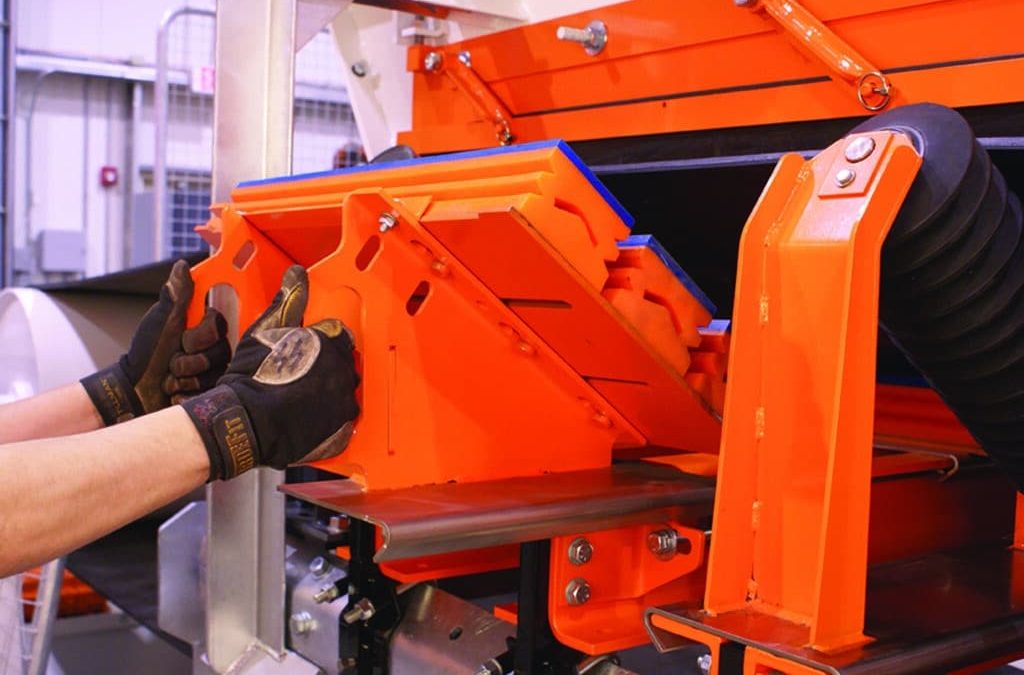According to Martin Engineering, conveyors are among the most dynamic and potentially dangerous equipment in bulk handling
Because of this, designs should be forward-thinking and exceed compliance standards. Martin Engineering has introduced equipment that are not only engineered for safer operation and servicing but also reduced maintenance time.
“An example is the Martin QC1 Cleaner HD/XHD STS (safe-to-service) primary cleaner and the Martin SQC2S STS secondary cleaner, designed so the blade cartridge can be pulled away from the belt for safe access and replacement by a single worker,” the company said.
“The same slide-out technology has been applied to impact cradle designs. Systems like the Martin Slider Cradle are engineered so operators can work on the equipment safely, without breaking the plane of motion.
“External servicing reduces confined space entry and eliminates reach-in maintenance while facilitating faster replacement. The result is greater safety and efficiency, with less downtime.”
Martin Engineering’s CleanScrape belt cleaner has been awarded the Innovative Technology award at the Australian Bulk Handling Awards for its extended service life, low belt wear and reduced maintenance.
“Unlike conventional belt cleaners that are mounted at an angle to the belt, the CleanScrape is installed diagonally across the discharge pulley, forming a three-dimensional curve beneath the discharge area that conforms to the pulley’s shape,” the company said.
“The novel approach has been so effective that in many operations, previously crucial secondary belt cleaners have become unnecessary, saving further on belt cleaning costs and service time.
“Safety-minded design at the planning stage reduces injuries by engineering hazards out of the system.
“The system will likely meet or exceed the demands of modern production and safety regulations, with a longer operational life, fewer stoppages and a lower cost of operation.”



